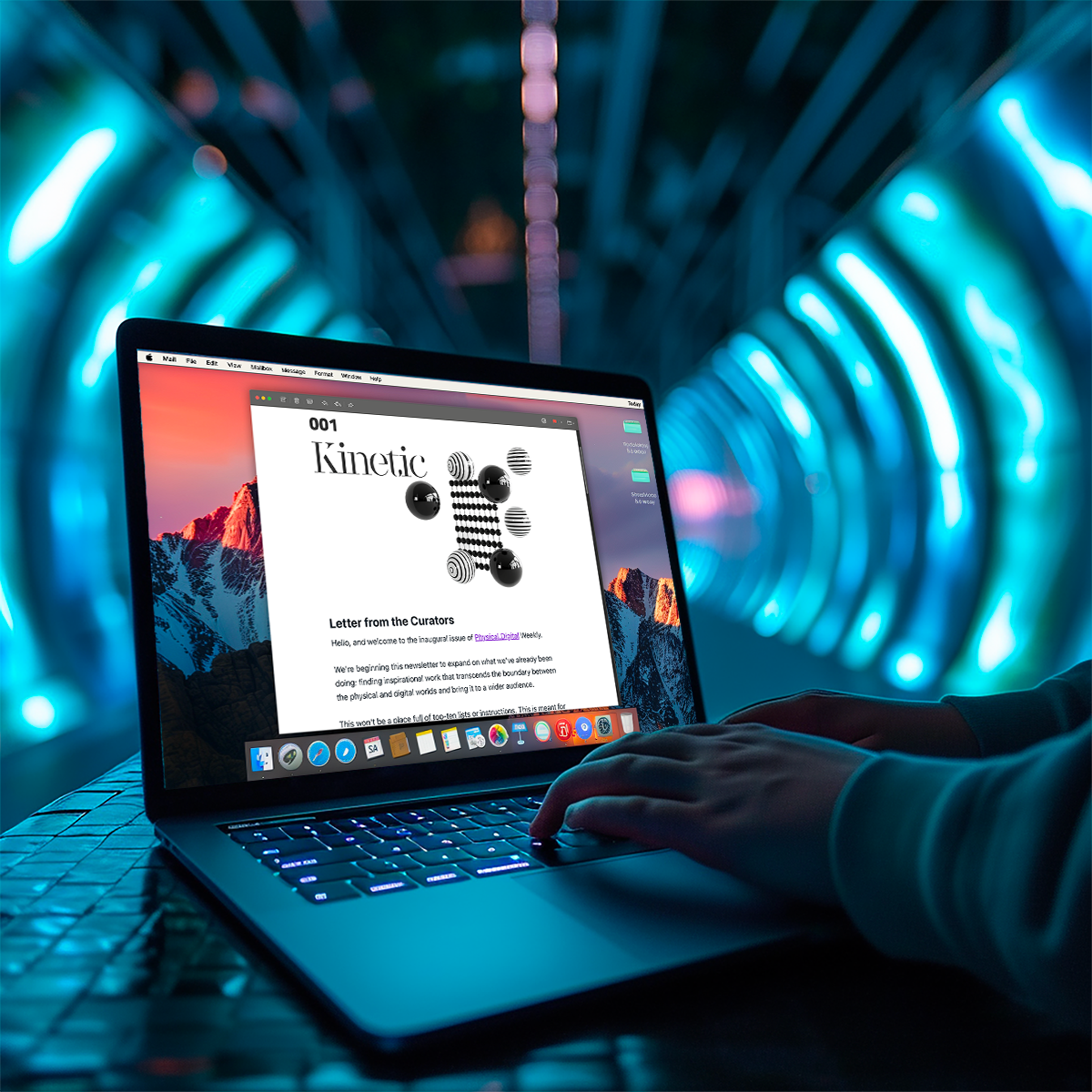Christopher Bauder

A conversation with
Christopher Bauder
With nearly thirty years under his belt as an exhibiting artist, Christopher is full of wisdom to share with our audience. Read on to learn what inspires him and his advice for up and coming artists.

Berlin has had an enormous influence on your work. What’s your relationship with the city?
I'm always saying I'm a typical Berlin techno kid, I grew up in the clubs of Berlin.
Maybe not in the first wave, but in the first and a half wave. The Berlin club scene started right after the wall came down. I came to Berlin in ‘96, I think. So I was kind of young and those early clubs fascinated me immediately.
How can I stimulate the human brain to push it in different directions?
I mean, I'm from the countryside. I'm a village boy, from a small village with 3,000 people. So Berlin was like a crazy machine to me and this club scene with the lights, and how the society works in the clubs, and how you express yourself through solo dancing in the haze very much influenced me.
I'm very much still influenced by how the lighting affects the people in the club. More than people actually know. How can the combination of music and lights bring you into another state, change your mood, change your attitude, change your emotions, these kinds of things that clubs are doing. I'm also thinking about how can I get that kind of ecstasy, but without the drugs. How can I stimulate the human brain to push it in different directions?
Now, I'm creating those spaces and I am thinking about what is the psychology of a club and how's the space set up? How is it working? How's it set up spatially? How does the flow of people work? How can I incorporate the enthusiasm of the Berlin party night into an art piece?
CIRCULAR is a hypnotic ballet of three rings of light that perform a weightless dance in the void of darkness. Created by Chrisopher Bauder, 2015.
Can you talk about your evolution as an artist?
I was always fascinated by lights in general. I was building lamps and small things as a kid. And then I came to art school, I was studying creative coding, writing software, mainly for the screen and with the keyboard and the mouse. And I didn't like that so much. I wanted to bring that out in into the physical space.
I have so many ideas that I cannot possibly even realize them, even with a big team.
I started to do that with an installation where I use 64 balloons tethered on motors to create a three dimensional dynamic shape that I could export into the physical world and control with computer software.
And while building that, I realized that I reached the maximum capability a solo artist can do. So I was building those boards and soldering and then building the motor systems and writing software on top and bringing it all to the show myself in boxes. And it was just getting too much.
I realized you need other people to help and to support. And also other people have better knowledge than myself in the individual fields. So I started to first hire my friends and freelancers. And then I realized it's more practical to have permanent employees because you can grow together with them as a team. That's how WHITEvoid started—to facilitate these larger scale projects and also branch out into multiple projects at the same time. I have so many ideas that I cannot possibly even realize them, even with a big team.
Is KINETIC LIGHTS primarily in service to other artists or to support your own art?
I didn't want to make products in the first place. I studied in art school, I wanted to make art. I showed my first kinetic installations as an art piece initially, and immediately it got traction in the event industry. They were desperately looking for something new, and all these events and venues have big indoor spaces and my kinetic installations fit right in there.
So I needed to make better motors and make them a product that I can mass produce and that's when KINETIC LIGHTS started. If you're a designer or an agency, you can just buy those products for your own spaces and do your own creations, not bound to my personal art, but then of course there's always this kind of cross pollination effect.
I'm creating a new art show called VEKTOR and I'm using a new product of KINETIC LIGHTS that was specifically designed for the performance. It's a new big heavy lifter winch where I can attach all kinds of light elements or lasers or moving lights.
So it’s a product for KINETIC LIGHTS, and my art show advertises that product. Clients can buy or hire these products, and by doing so, they are financing my art—it goes in both directions.
How important is collaboration?
If you want to create on a larger scale, you need to work with a team.
I understand that artists are more introverts like myself, you know? So it's really difficult actually.
If you want to create on a larger scale, you need to work with a team. You need to work with the client's team. You need to work with the space. There's so many people you need to work with that you would prefer not to. So you need to overcome your fear of being an introvert. I mean, you can be an introvert, but you will never do stuff on that scale. You have to go out and talk to all these people and make things happen.
It's not only important to have a good idea, you also need to have exposure, and to get exposure, you need to find other people who believe in it, and give you the space, give you the opportunity, curate you, and this is communication.
How does your creative process collaborating with others differ from when you're more or less owning the entire creative vision?
Normally for collaborative pieces, I have a general idea for the kind of set up or shape of the basic installation, what kind of elements I want to use and how they are arranged in the space, and some rough patterns.
But then very early, I work with my musical collaborator, a composer, to figure out the story of it. You know, what do we want to talk about with the installation? For example, with Robert Henke, I have one piece with lasers and kinetics and it's called DEEP WEB.
DEEP WEB - kinetic audiovisual installation and performance by Christopher Bauder and Robert Henke.
Our story was about communication. So the process begins with ‘how does communication start?’ Okay, one person starts to communicate, and then eventually there's a receiver, and it's talking back, and then they get into a dialogue, and we use the sounds and elements from early digital communication like phone line crackling or like the dialing tones of modems.
Then the musical collaborator starts to compose small musical pieces and I'm starting sketches and 3d animations or simple renderings of the visual part, and we try to kind of mix and match, adapt to each other.
So it's a bit like a ping pong game where we look at each other's work and try to complement it, or we try to find additions. From there, it's a truly collaborative process. But on the other hand, I also depend on what the musician comes up with. So I have limited influence. I have to accept what they are bringing because it's a collaborative piece.
...this kind of synesthetic effect is really important...modulating the emotional journey of the audience.
And with the new show VEKTOR, I can come up with the story, the music and the visual all at once. While I'm composing, I’m already thinking about the visual. I can be even more interlinked with the visuals to the audio and it's not that one of them exists first.
For me, this kind of synesthetic effect is really important—that the audio and the visual are one, they're catering towards one thing, which is influencing the audience, or modulating the emotional journey of the audience.
When I am given music, I can only do that to a certain degree. When I do it all myself, I can influence that even further. It's a lot of fun. If it's successful is not so important to me. It's because I was thinking of it for a very long time and made a lot of collections of things that I wanted to incorporate.
It’s also very personal. I'm incorporating samples that I'm recording myself, my breathing, elements from my past. I come from the village, and on Sunday, you hear the bells, things like that. It makes me really happy to work on all levels of the show.
But now I really understand what these musicians and composers were doing in the past. I always knew they were great, but now I understand even more on what level they are delivering and also in what timeframe. Robert sometimes was composing the whole show of like 45, 50 minutes in two weeks. I'm working on it now for eight months, something like that. But yeah, it's very exciting to learn something new also.
What advice do you have for young creators?
It's all about doing little baby steps. This can be a problem today, because you're overwhelmed by all this stuff you see on the internet and it comes in by the second, like fantastic, huge projects.
But we're also 8 billion people. And it's natural that hundreds or maybe even thousands of great projects come out every day. But it looks like the pace is really high. My project took five years, from developing the machine for it to ideation to composing to all of these things.
So it's a lot of steps in between learning and doing the next step and so on. It's starting really small, taking a lot of small steps over a long time, rather than doing huge leaps in a very short time. I've been doing these kinds of things now for 20-25 years.
My learning curve is very flat, you know I learn a little bit every day and this goes on for a very long time. It's not like you get to that level in one year, you have to constantly educate yourself and elevate yourself into the next big project. I started super small. My first project cost maybe 100 euros, 200 euros. Very early on, I tried to find sponsors for the space where to exhibit or collaborators that can help.
What other factors contribute to your rise as an artist?
The rest is extremely hard work. A lot of hard work.
I dedicate every hour of my life to it. I don't do much else. It might sound discouraging if you want to have another life and go to parties and have a big social life and so on, then possibly you will not achieve this level because you need to dedicate a very large amount of your time to do nothing else.
You always have to overcome one of your fears as an artist to grow to such a certain level.
During the day I run the companies and during the week and on the weekends I go to create the music or write the concepts, work on the designs and so on. You can only do that if you like it so much that you don't need another life or that you don't see the separation between work and free time. I don't have that at all.
When I go on holiday, two to three days is relaxing, and then I start being so relaxed that I have tons of new ideas and then I'm sitting there writing it all down, eager to go back to work on it. That's the level of my dedication to what I'm doing because I think I found the thing that I'm supposed to do. My attitude is that everybody has a purpose or can find their position in the
world or in life. If you find it, you don't feel what you do is work anymore. This is just your life. It's natural because you're supposed to be there and do that. And I have that feeling with what I'm doing.
A big thing that a lot of people are not aware of, it’s 99 percent management and 1 percent creation. I'm a manager, you know, I'm sitting on a computer screen, going to meetings 99 percent of my time, and only 1 percent of time I'm really creating. It's a very small part of it. Every big artist that works on that level is a manager too.
To sum it up, you need to spend most of your time doing it, work really hard, keep on doing it for a very long time, and be communicative and talk with a lot of people, make them interested in working with you, or for you. You always have to overcome one of your fears as an artist to grow to a certain level.
What do you see as the future of physical digital convergence?
In the beginning it was clear that something is built and that something is simulated. However, now there's also the platform where all of this is presented.
There's so many projects now that render their installation in a way that people think it was actually made. In the old times, you were a successful artist when a lot of people saw your pieces. Now seeing is scrolling on the phone.
So for me, this is becoming more and more indistinguishable. I don't even wanna judge it. if that's good or bad. It just makes the physical and the virtual become one thing, because the platform where they are both presented is the same one.
It's a very surprising development for me because I always thought that for a long time, there would be the separation between the two of them, that there would be people who would do art completely as a simulation, and people would do completely physically built. I'm still undecided what it all means and where it's all going.
I'm just realizing, of course we will get to the topic of AI.
Who is a real artist? And what is even the definition of that today?
Because there's guys that have hundreds of followers, and they're just prompting a text, for AI to create. Is that still their art or not? I mean, that's the main question that everybody's asking. The only thing that I can state is, well, it's indistinguishable from real art. And then what is real art in the end? You know, like this is now all becoming a huge blur. I feel really bad for professors in art school now. What are they going to do?
...if you are clinging on to the way we always did it, you will be out. You have to adapt and then find the positive things.
Luckily I have ideas and taste. I have crazy ideas in my head. I cannot get them out with my hand. It's impossible. But with AI or with prompting, I can realize the craziest stuff.
Anyone can write a basic prompt.. But is that good? So, having a good idea for the prompt, and then having taste to select a good result. These two skills of an artist still remain. All the other skills of an artist are gone, in my opinion. And, yeah, this will create even another level of this digital and physical discussion. I'm actually happy that I'm creating physical pieces, I still have a little bit of an advantage over purely digital artists.
For me, it's a very good development that AI allows me to, with simple input, create super complex outputs.
I don't know what that means, I find it all very exciting and interesting, but of course it brings crazy change and people are afraid of change.
It's a natural development. You have to accept, if you are clinging on to the way we always did it, you will be out. You have to adapt and then find the positive things.
You need to find your own way of dealing with it because there's no way around it anymore and there's no way back.
What is inspiring you today?
For me, the inspiration comes during the process while I'm working on something. It's a stream of consciousness, or some artists call it flow, where everything that influxes in your brain kind of blows out into the creation of the art again. You need to feel all the influences at that moment and then try to channel them.
My inspiration is completely outside of my field. I avoid going to exhibitions. I'm always trying to avoid the trend, or mainstream. If too many people now jump on something, I go somewhere else so I'm not inspired by the scene or what's going on in my environment of experiential art or kinetic art.
I'm getting inspired by everything else. In life, I watched a lot of movies and I get a lot of inspiration from architecture.
I have this strange wiring in my head. As a kid, people say you're a dreamer because you're side tracked or people talk to you, but you think about something else. Sometimes I can't even process the words that they’re saying, because my mind is drifting. They tell you this is a negative thing, but now I realized that whatever I experience can inspire me, give me an idea for something totally unrelated.
So this can be nature of course, I'm very inspired by nature. The sounds of nature, materials, how light works in nature, not only sunlight, but also if it's the other way around. If there's a storm or it's raining, I can enjoy all kinds of variations of weather.
I grew up in the countryside, and it inspired me a lot as it's deeply ingrained in my memory. So if I need to soothe myself or calm myself down, I think of certain spots where I come from like a bench where I oversee the lake, or one of the fields where I would lay in as a kid and the grass is higher than me, or how the sun goes down over the mountain hillside next to our house and things like that.
With AXION, light artist Christopher Bauder and composer KiNK explore the ultimate horizon: Outer Space.
The other thing is also very abstract—it's not pictures or physical things—it's more emotional.
Like what creates emotion and how is it related to memories of pictures? Why do I think positively when I think of a sunny scene on the beach that I have experienced? And why do I think negative if in math class, a test or something. I don't know, but I'm like why, how does that work? And why does it influence my mood so much?
Within a second, I can switch from being totally happy to extremely angry or something like that. And I'm really interested in researching emotional variations that we have as humans.
Why do you always need to be happy? That's one question I'm also always posing.
Everybody's longing for happiness and the more happy scenes and the better I feel, the better my life. Why? When I watch a movie and it's only happy, isn't it shallow? It needs to have some kind of a drama to kind of bring back happiness. So if you don't know the low, you don't feel the high really well, so I'm interested in those variations.
How does that inspire or translate into light art? You know, there's no direct way, it's asking how to translate that into built environments, and how to modulate those environments to represent different forms of how we feel and how we think, and how to do that without making any words and talking and explaining the text for my art pieces.
It's just a rough framework. It doesn't really tell you what you're supposed to do with it. So the art itself has to do that. With Dark Matter, we have guest books and there's comments on Google and some people find it extremely profound and have Godlike experience there or something similar, and other people say, ‘I went through it in five minutes and it was just a pile of crap.’ And that's already super interesting to me, that it’s possible to create these two kinds of experiences with one artwork, and that tells me how different humans are. And then I'm challenged again.
Like, how can I get that person also that went through it in five minutes? What can I do to make that person stick around for longer? That's a great challenge. So these things and ideas are inspiring me. It's very weird and hard to explain the way that I collect all these things.
It's a bit like magic to get that into the art. It's already in you.
As a kid, I was told that it's negative and it's not how a normal person works and behaves, and now I'm realizing these people didn't get it.
Can you tell us about VEKTOR, your newest installation?
VEKTOR is a combination of the last 20 years of work and it's my most personal piece because I'm creating all sides of it.
It's a sum up of all these principles, influenced by nature, emotional journey, and very abstract things, to inspirations I get from other musicians I worked with in the past, inspiration from my own art, older art pieces.
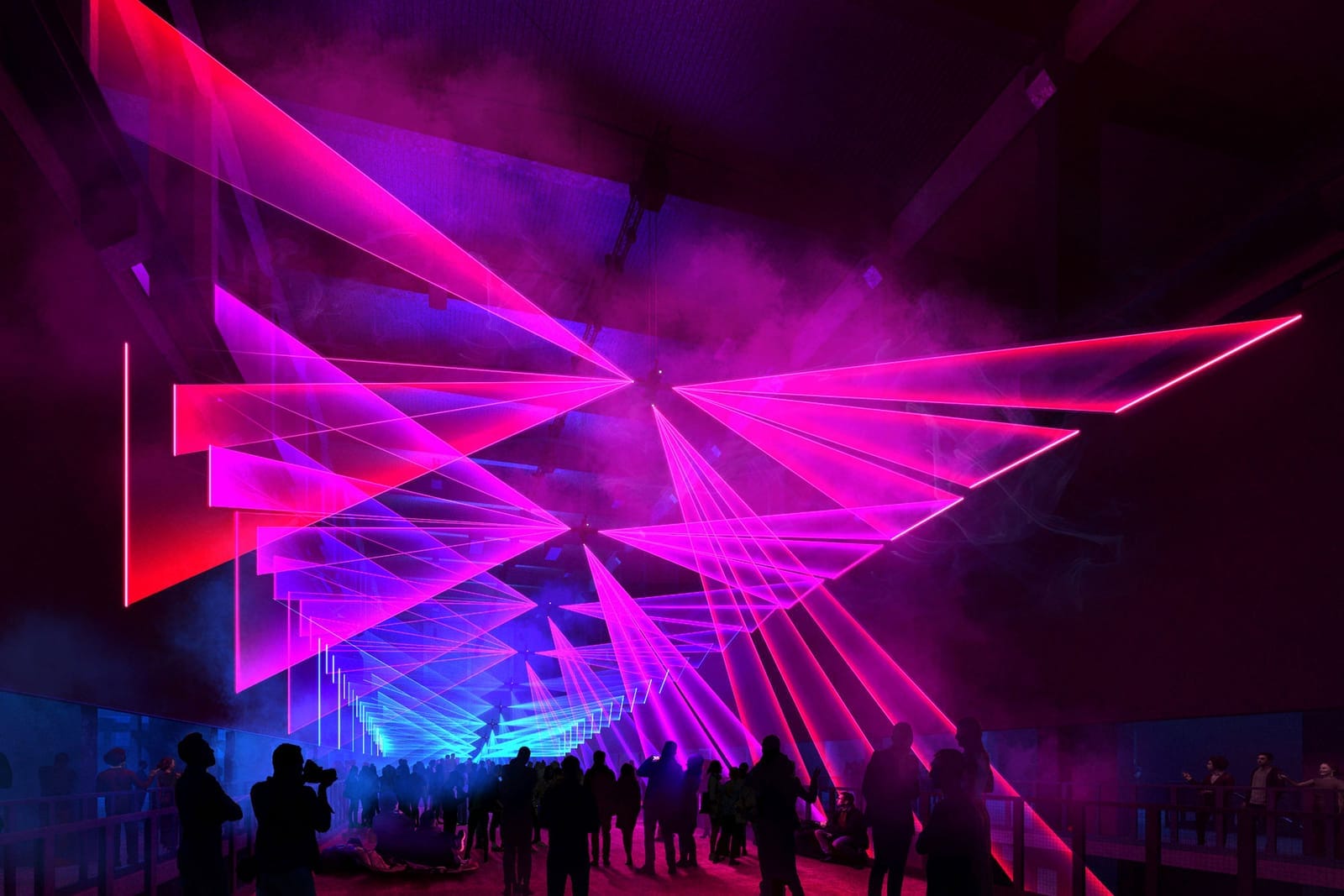
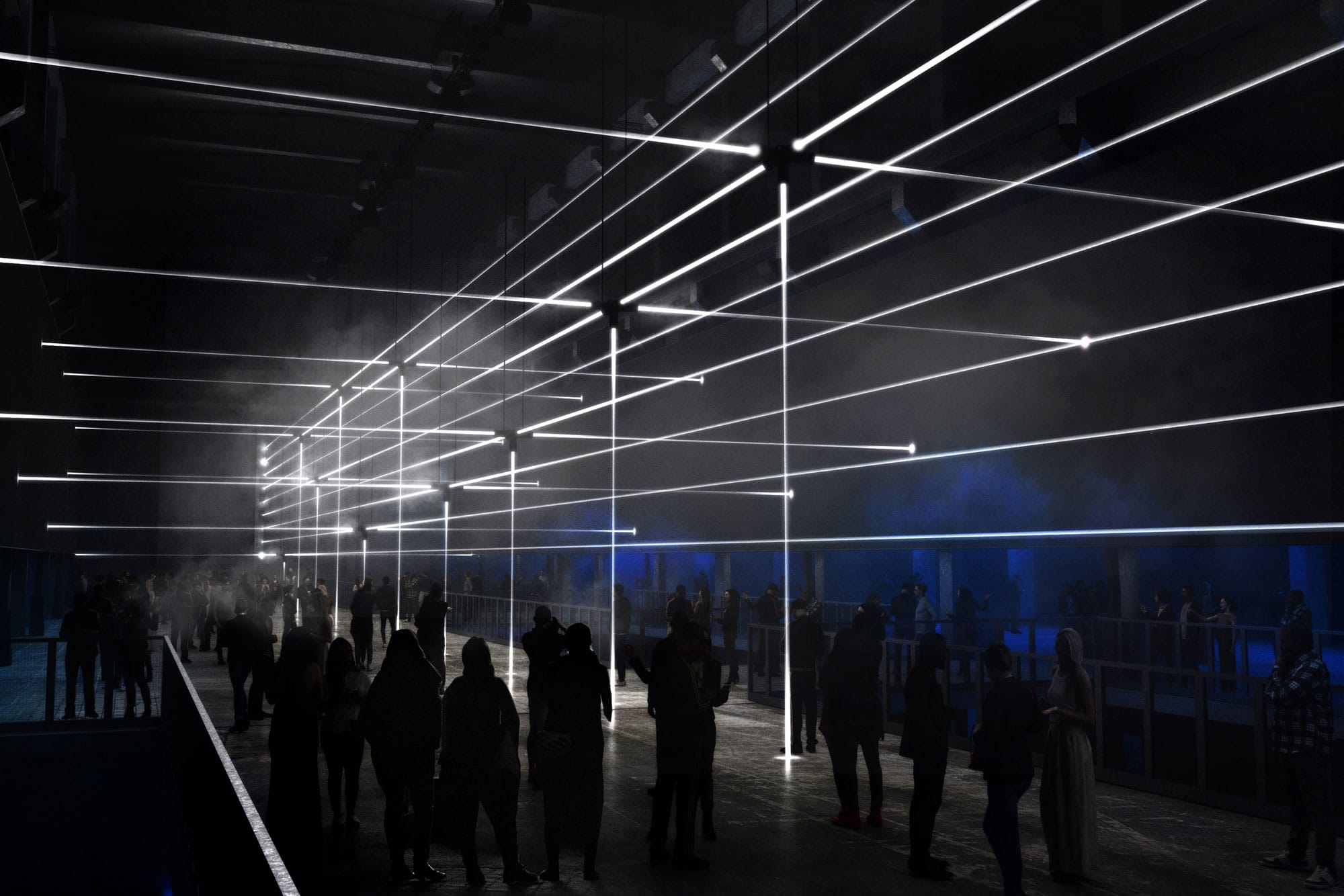
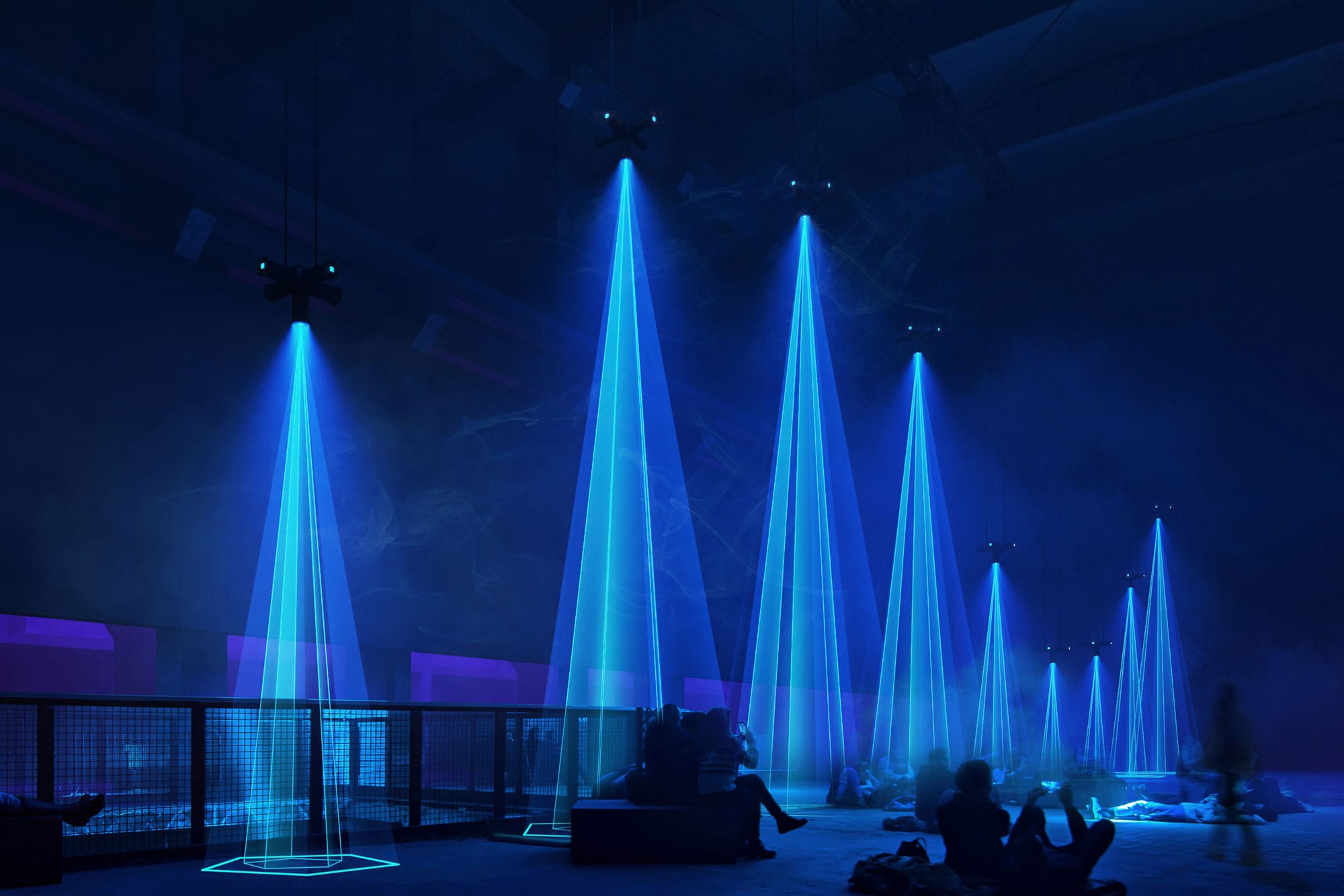
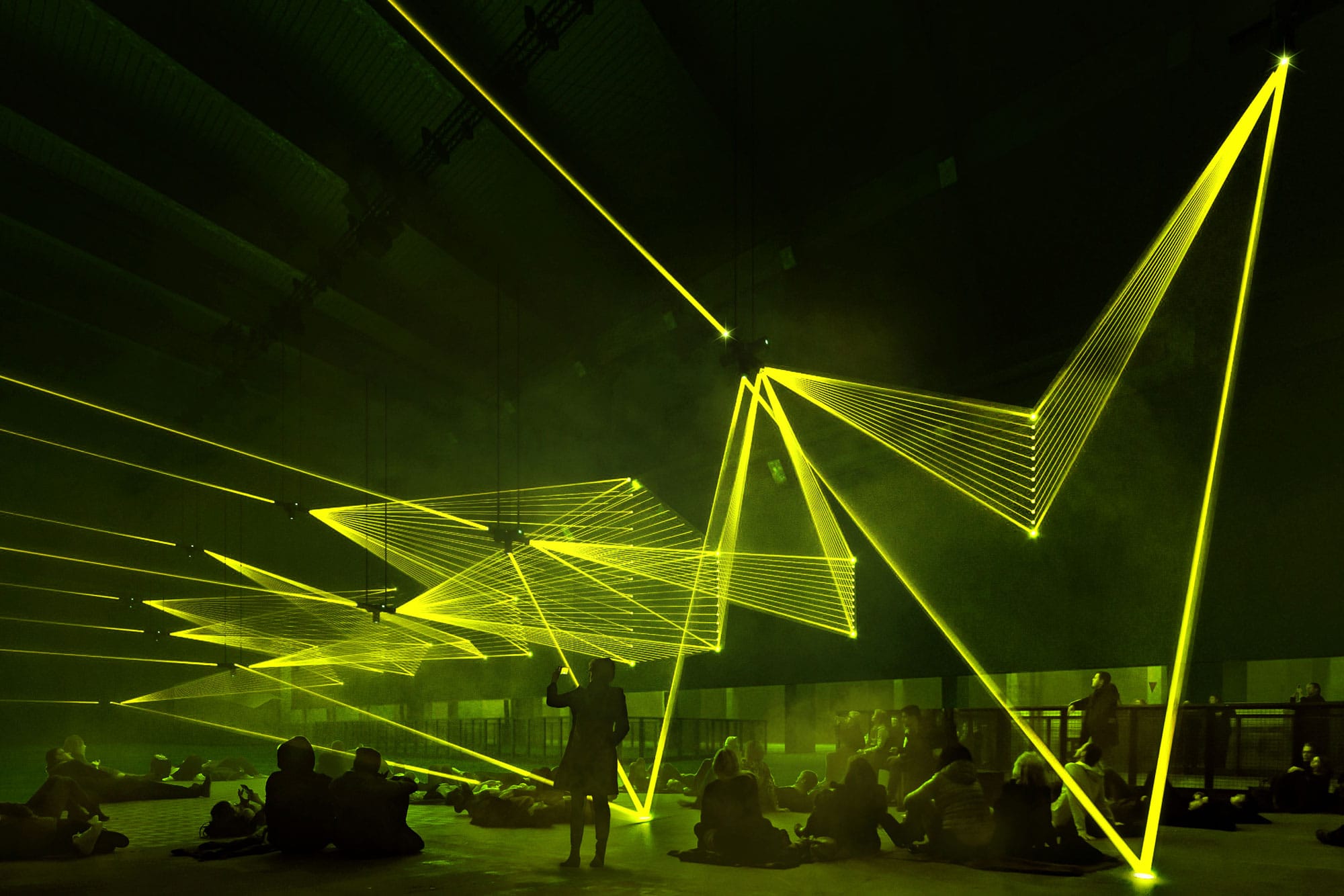
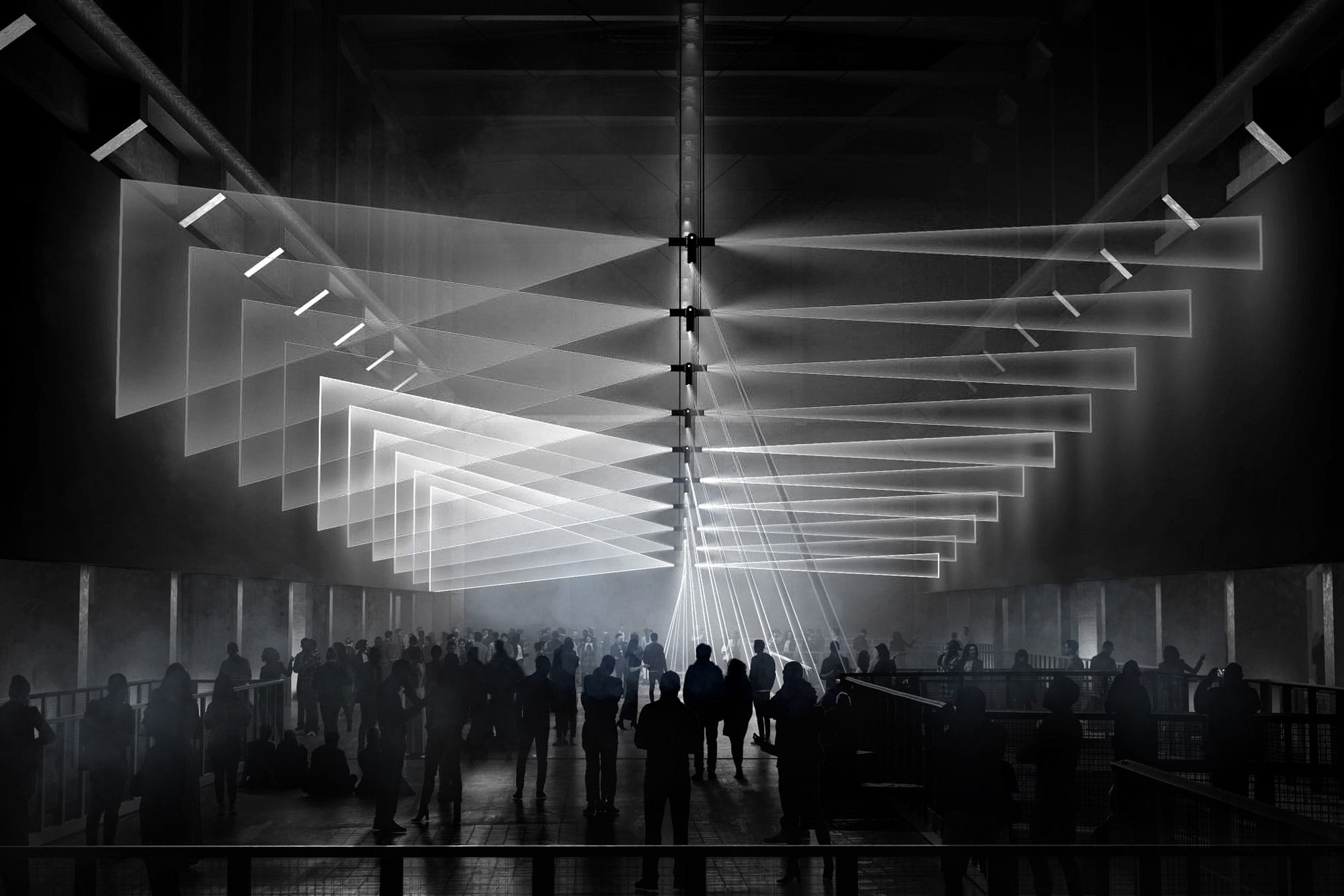
Others are now doing that too, and inspired by what I'm doing, and I don't want to be compared. In the digital age, no one knows anymore who was first and no one cares. If I say ‘Hey, but I've been doing this for 20 years already’ everybody's like, ‘well, I don't care.’ I can do it now too. So, you're swimming in your own pond that you created and this is a kind of a wrap up show of all the things I did so far. And with the next things I want to go somewhere else—not necessarily completely away from the kinetics or way I'm creating, but yeah, it will be very different, I think.
I want to start another phase also to create my own music. I want to connect that even further to the visual, maybe even the music directly co-creating the visual, and AI to link that even stronger and incorporate more generative aspects and so on.
That's why I think it can be interesting to come and see VEKTOR, which is running at Kraftwerk, Berlin, which I call my living room. But of course it's a humongous living room. It's my favorite space in the world to create. I had the idea there for my first very large scale kinetic show, DEEP WEB. When I was in Kraftwerk at a festival more than 10 years ago, this space really inspired me. It's an industrial cathedral. I see many spaces all over the world, but I haven't seen any industrial space that is like Kraftwerk.
And it has this power and it radiates character that you cannot ignore. You have to work with the power plant. I'm playing in the whole space this time. So this is a 100 meter deep, 60 meter wide and 30 meter high space. I'm using elements to incorporate the space itself, giving it a voice. I recorded samples in the venue, for example. So I will play them back in the venue and make the space resonate and be an instrument itself incorporated into the art show. So it will be hard to play it somewhere else the same way.
It's insane to spatialize the sound. I've never done it before. That's also the thing. I keep it interesting by doing new stuff.
Learn something that you don't feel comfortable with and still stay calm if possible, you know, that's the challenge.

